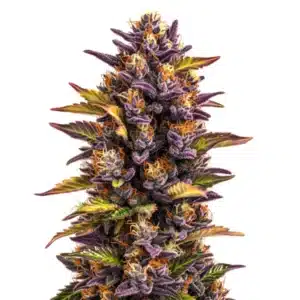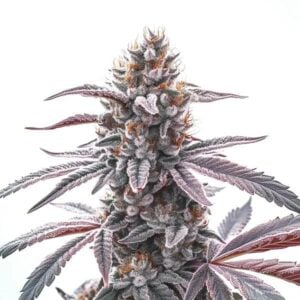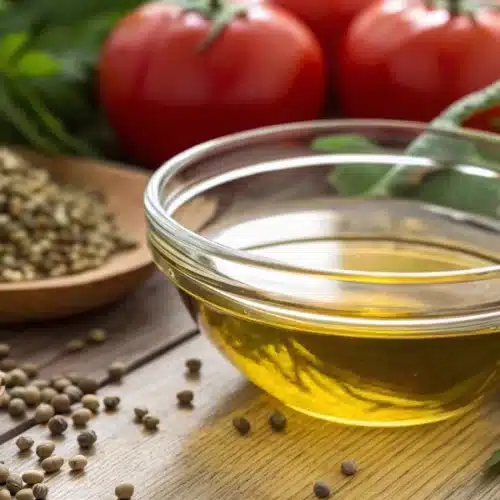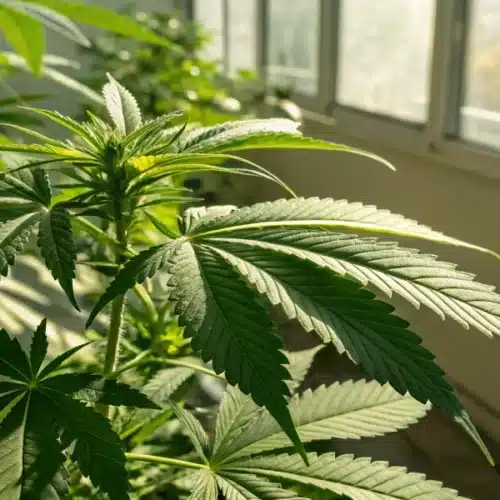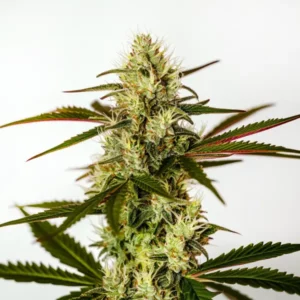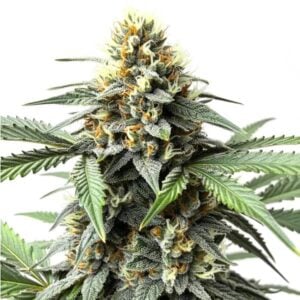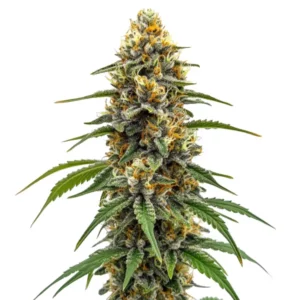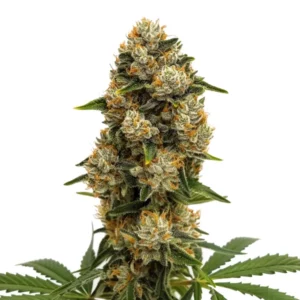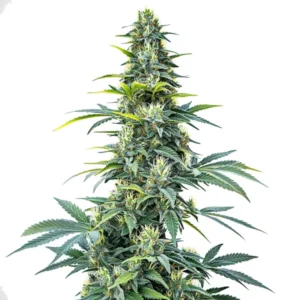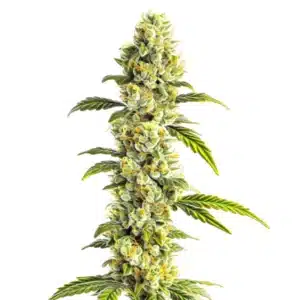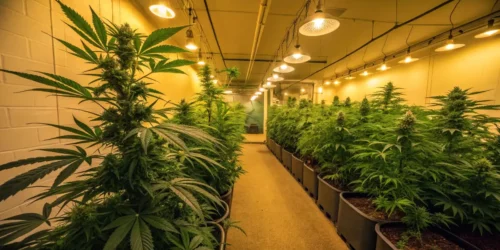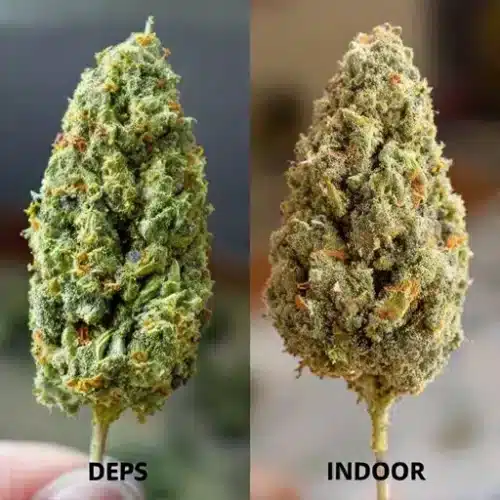Light Intensity and Spectrum
Natural Sunlight vs. Artificial Lighting
When comparing greenhouse vs indoor potency, the quality of light is often the first thing that comes to mind. Sunlight delivers a complete light spectrum that evolves throughout the day, offering a dynamic and powerful resource for plant growth. This natural variety contributes to more developed cannabinoid and terpene profiles in greenhouse-grown cannabis.
It’s important to note that natural sunlight is up to 10 times more powerful than most artificial lighting systems. This sheer intensity, when combined with a full spectrum that includes UV-A and UV-B rays, can lead to impressive cannabinoid expression but only when the plant receives enough direct sunlight each day.
In outdoor or greenhouse setups, more than 10 hours of direct sunlight daily is ideal. If the grow is on a balcony or near a window without a southern exposure, it may not receive the light intensity required for optimal flowering, resulting in weak or underdeveloped buds.
This difference in natural vs artificial light is one of the core reasons why greenhouse vs indoor potency continues to be a hot topic among cultivators. In contrast, indoor growers rely on LED or HPS systems to simulate the sun’s power. While technology has made huge advances, artificial lights still struggle to reproduce the full UV spectrum that comes from natural sunlight. However, indoor grows have a major advantage no cloudy days, no rain, no excessive wind, and guaranteed light hours every day. This level of consistency allows indoor growers to create ideal conditions, especially for strains that demand precision, often resulting in buds with extremely high THC content.
Impact on Potency
The way cannabis absorbs light is directly tied to how many cannabinoids it can produce. Sunlight’s UV-B rays, in particular, play a key role in stimulating THC synthesis. This is why greenhouse cannabis often has a broader and more natural cannabinoid expression. Plus, many growers report richer terpene profiles, which affect aroma and flavor as well as the high.
Indoor grows might not have the same UV exposure, but they compensate with strict control. Light schedules can be adjusted by the hour, ensuring plants receive optimal wavelengths during both vegetative and flowering stages. This high level of precision often results in flowers with high THC percentages, even if they lack the “depth” of a sun-kissed bud. And thanks to the controlled environment, indoor plants never suffer from light interruption or unfavorable weather, giving them the edge in maximizing potency.
Promos & Deals
Temperature and Humidity Control
Effects on Cannabinoid Profile
Cannabis is extremely sensitive to its environment, especially temperature and humidity. In greenhouses, these variables shift naturally, creating a rhythm that mirrors what cannabis plants have adapted to in the wild. This fluctuation can positively influence the production of secondary metabolites like terpenes and flavonoids, leading to a more complex product.
Indoor growers, on the other hand, take a more surgical approach. By dialing in temperature and relative humidity for each stage of the grow cycle, they can push plants to maximize resin production. The downside? Any miscalculation or equipment failure can affect the entire crop’s potency, especially in larger grow operations.
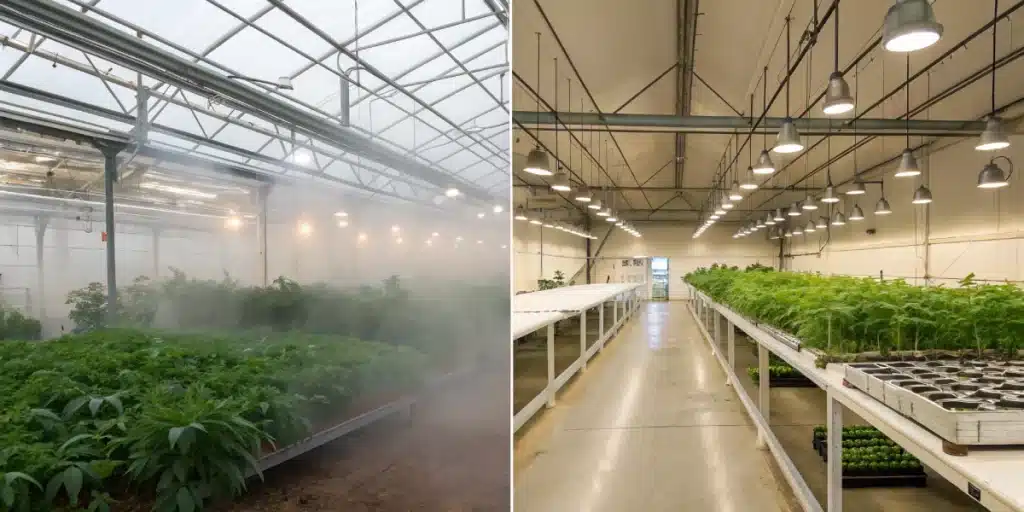
Optimizing Conditions
Greenhouse growers often face challenges related to seasonal changes, but this can also be an advantage. Slight stress from temperature swings may boost cannabinoid production as plants react defensively. This kind of natural stimulus is nearly impossible to replicate in indoor environments.
Indoors, precision is king. With the right HVAC setup, growers can create ideal microclimates. For example, lowering nighttime temperatures during flowering can enhance anthocyanin production, adding purple hues and boosting aesthetic appeal. While less “natural,” these adjustments can absolutely result in top-tier potency.
Genetics and Strain Behavior
Strain Response to Environment
Not all strains behave the same in different environments. Some cultivars are genetically wired to perform better in greenhouses where they benefit from natural stressors like UV radiation and light variation. These strains often develop stronger aromas and more nuanced cannabinoid profiles when grown under the sun.
Other strains are finicky and need constant, controlled conditions to express their full potential. These usually do better indoors, where factors like CO₂ levels, light hours, and humidity can be meticulously fine-tuned. Understanding these performance differences is essential when comparing greenhouse vs indoor potency, as the same strain can produce very different results depending on how and where it’s grown.
Selecting the Right Genetics
Choosing the right strain for your setup isn’t just about flavor or yield it’s about compatibility. Cultivators targeting high potency need to look at breeder recommendations and strain histories. Some hybrids have been bred specifically for indoor grows, while heirloom or landrace varieties might excel in greenhouses.
For instance, Do-Si-Dos is a hybrid that truly shines in indoor setups thanks to its dense, trichome-rich flowers and need for precise environmental control. On the flip side, a landrace like Durban Poison originating from South Africa is naturally resilient and well-suited for greenhouse environments, where it benefits from sun exposure and airflow. Another strong greenhouse performer is Super Silver Haze, a sativa-dominant strain that responds beautifully to light fluctuations and rewards growers with resinous, flavorful buds.
It’s also smart to consider how environmental stresses affect each strain. For example, a cultivar that’s sensitive to heat or mold may struggle in a greenhouse without extra care. Meanwhile, a more rugged strain might benefit from the gentle fluctuations of a semi-outdoor setup, producing resin-heavy buds as a result. Factoring in genetic behavior is essential when discussing greenhouse vs indoor potency, especially for growers looking to tailor their environment to maximize cannabinoid output.
Plant Health and Pest Management
Protection from Pests and Pathogens
Indoor cultivation is naturally more protected against outside contaminants. Sealed grow rooms reduce the risk of pests, mold, and diseases, which in turn protects plant potency. However, maintaining a sterile environment takes constant monitoring and sometimes hefty investments in filtration and sanitation.
Greenhouses aren’t as closed off, which means growers need to be proactive with integrated pest management (IPM). That said, greenhouses also offer more natural airflow, which helps prevent moisture buildup a common culprit in mold outbreaks. Many greenhouse growers also use beneficial insects, creating a more organic pest control system.
Stress and Cannabinoid Production
A little stress isn’t always bad for cannabis. In fact, moderate environmental stress like fluctuating light or temperature can signal plants to boost their defenses. This often results in increased trichome production, which is where cannabinoids like THC are concentrated.
In indoor grows, stress is carefully managed. Too much can damage yield or potency, but strategic use of stress like controlled drought periods or light deprivation can improve resin output. Master growers use these tactics to push their plants right to the edge, without going over.
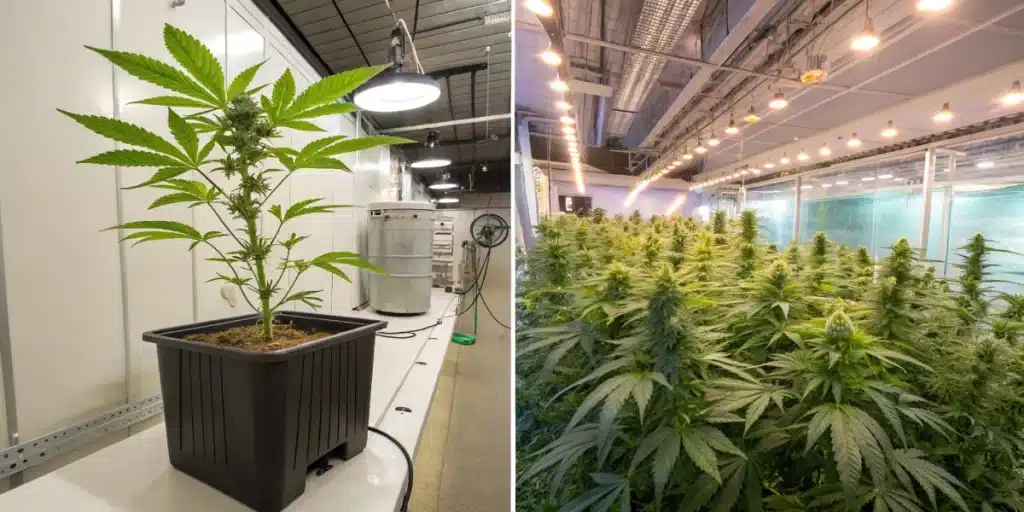
Energy Consumption and Sustainability
Environmental Impact
There’s no way around it: indoor cannabis cultivation has a large energy footprint. Artificial lighting, HVAC systems, and dehumidifiers run around the clock, often powered by non-renewable electricity. While this allows for maximum potency, it comes at a cost both financially and environmentally.
Greenhouses, in comparison, are much more sustainable. By relying on sunlight and passive ventilation, growers reduce their carbon footprint and electricity bills. Even supplemental lighting in greenhouses uses far less energy than fully indoor setups. This makes greenhouses a great option for eco-conscious cultivators who still want strong, potent buds.
Cost vs. Potency Trade-Off
Indoor grows can produce extremely high-THC cannabis, but they’re expensive to run. For small-scale or boutique operations, the consistency and potency may justify the cost. For larger commercial outfits, the energy bills and labor costs can stack up quickly.
Greenhouse cultivation sits in the sweet spot between cost and quality. While potency may vary slightly depending on weather and region, many growers find that the overall cannabinoid profile is richer and more enjoyable. Plus, with the right infrastructure, greenhouses can deliver consistent yields without breaking the bank.
Comparative Summary
Final Verdict
At the end of the day, choosing between greenhouse and indoor cultivation comes down to your priorities. If you’re chasing the highest possible THC numbers, indoor might be your path. But if you’re after rich, complex profiles with sustainable practices, greenhouses make a strong case.
Both growing methods can produce potent, top-shelf cannabis when done right. It’s not just about the setup it’s about how well you use it. Grower skill, strain selection, and consistency matter just as much as the environment. And for those buying cannabis seeds online, understanding the endgame can help you choose the best strain for your preferred grow style.
FAQs
What is the primary difference between greenhouse and indoor potency cannabis growing?
The primary difference lies in the light source and environmental control. Greenhouses utilize natural sunlight, while indoor grows depend on artificial lighting. This distinction affects the potency and cannabinoid profiles of the final product.
Can indoor grows achieve higher THC levels than greenhouse-grown cannabis?
Yes, indoor grows have higher THC percentage capabilities due to the ability to control light, temperature, and humidity, which allows for optimized cannabinoid production.
What environmental factors influence cannabis potency the most?
Light intensity and spectrum, temperature, and humidity levels are crucial environmental factors that significantly influence cannabis potency and overall cannabinoid profiles.
Which method is more sustainable: greenhouse or indoor potency cannabis cultivation?
Greenhouse cultivation is generally more sustainable due to its reliance on natural sunlight and lower energy consumption, making it an eco-friendlier option for long-term cultivation.


